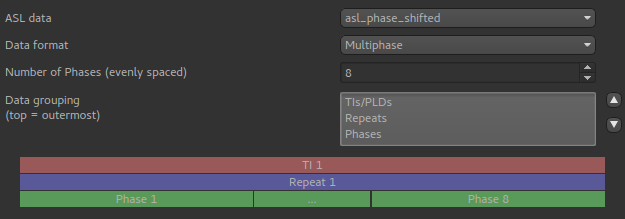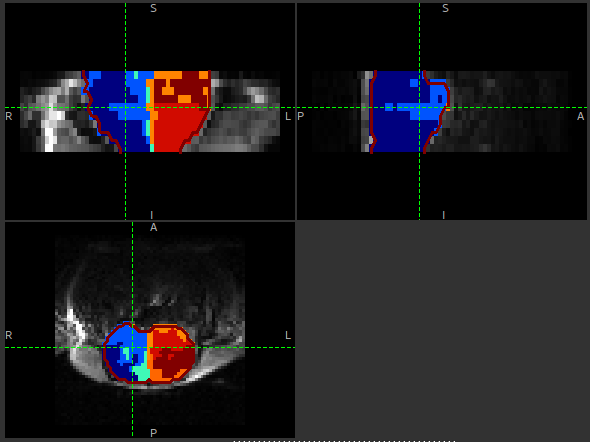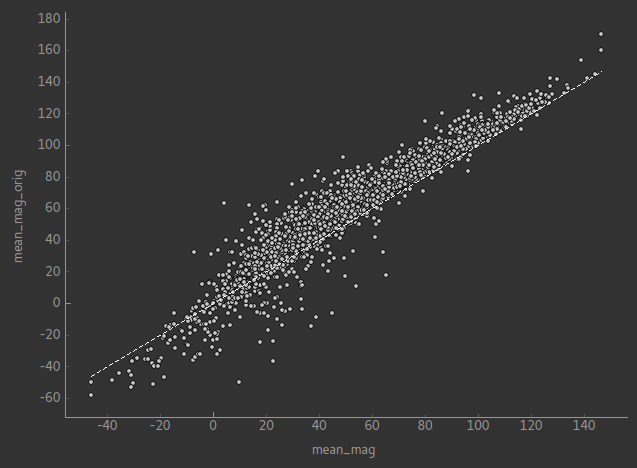Multiphase ASL¶
The Multiphase ASL widget is designed for single PLD multiphase ASL data. It performs a model-based fitting process which results in a net magnetisation map which can be treated as differenced ASL data.
Defining the structure¶
To begin you must define the structure of your ASL data, in the same way as with the other ASL widgets. Multiphase modelling is currently possible only for single PLD data, hence the PLDs entry is not visible. The main things to set are:
- The number of phases, which are assumed to be evenly spaced
- The data ordering, i.e. whether repeats of each phase are together, or whether the full set of phases is repeated multiple times. This is not relevant if the data is single-repeat
This data structure shows a simple single-repeat multiphase data set with 8 phases.

Analysis options¶
Bias correction¶

One issue with multiphase modelling is that the estimates of the magnetisation are biased in the presence of noise (in general a lower signal:noise ratio causes an overestimate of the magnetisation. The bias correction option (enabled by default) performs a series of steps to reduce this bias using a supervoxel-based method to first estimate the phase offset in distinct regions of the data. This phase offset is then fixed for the final modelling step, which eliminates the bias which only occurs when magnetisation and phase are both free to vary.
The full set of steps for bias correction are as follows:
- An initial modelling run is performed, allowing both magnetisation and phase to vary.
- A set of supervoxels are created based on the output phase map only.
- The signal is averaged in each supervoxel, and a second modelling step is performed. The averaging increases the SNR in each supervoxel to give an improved estimate of the phase in each supervoxel region.
- A final modelling step is performed with the phase in each supervoxel region fixed to the value determined in step 3. However the magnetisation and overall signal offset are free to vary independently at each voxel (i.e. are not constant within each supervoxel region). With the phase held constant, the biasing effects of noise are eliminated.
The supervoxels step requires a choice for the total number of supervoxels, the compactness and the degree of pre-smoothing. See the Supervoxels widget for more information about how these options are used.
The justification for assuming a constant phase in distinct regions is that this is related to distinct vascular territories (although there is no assumption of a 1:1 mapping between supervoxels and territories). For example, the following image shows the phase map for a data set with a significant left/right phase difference:

The supervoxels used in the phase mapping can be seen clearly.
This image shows a comparison between the magnetisation map with and without the bias correction. The systematic over-estimation of the magnetisation is clear

By default, only the resulting magnetisation map is returned by the process. By enabling the
Keep interim results option all the data generated during the process can be preserved. This
includes the original uncorrected outputs (suffix _orig), the averaged outputs within the
supervoxels (suffix _sv) and the supervoxels ROI itself (sv)